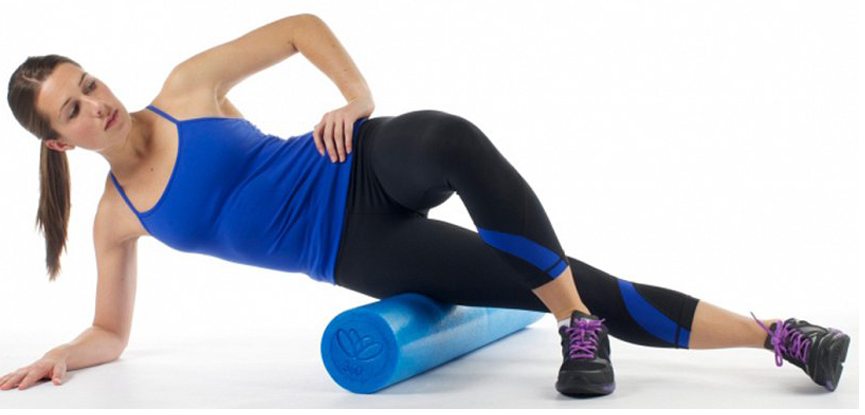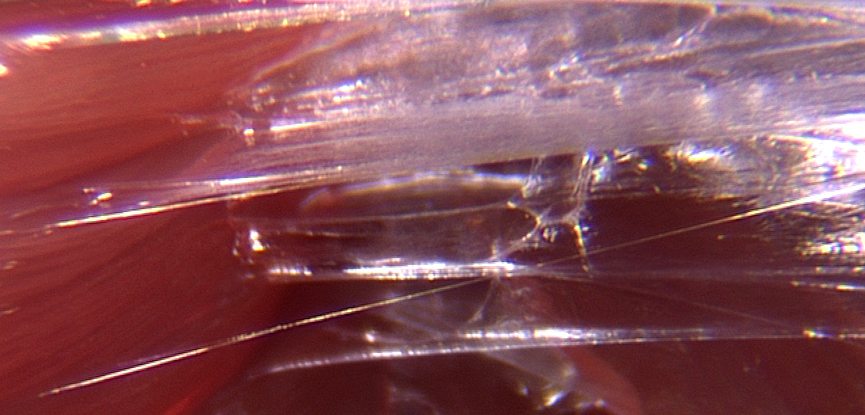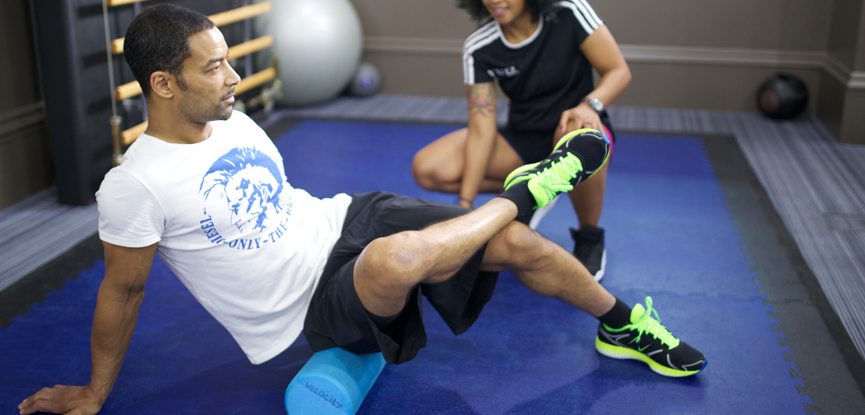In part two Ruth delves into current myofascial research and the best times to use a foam roller. Click to read part one of Thoughts on Foam Rolling and MFR.
Last year I attended a Robert Schleip workshop called ‘Fascia in Sport’. Robert is a wonderful and enthusiastic lecturer, full of knowledge with a desire to impart that knowledge for the benefit of others. He had worked with an experienced movement professional who was demonstrating the foam roller to provide us with techniques which could be incorporated into our own modalities. The vast majority of students on the workshop were movement professionals who already had an excellent range of motion, flexibility and mobility.

The demonstration on the foam roller was full of relatively fast acrobatics, all of which would have been impossible for my chronic pain clients but could have been appropriate for the right person. It made me realise that people who are already flexible, with a degree of stability, don’t need to foam roll in the manner that was demonstrated as it seemed a pointless exercise to add something to an already worthwhile and positive fitness programme.
Myofascial release
Is using a foam roller doing self myofascial release? If you’re using the foam roller for acrobatics, fast and deep movements, I’d say no. I’d rather call that self-massage. When we look at the amazing film footage of fascia from Jean-Claude Guimberteau we clearly see that fascia is multi-dimensional and multi-directional, it’s a 3D network which needs to be treated in a three-dimensional manner. Foam rolling is not doing this, it is squashing all these layers and compartments together instead of separating them apart to promote tissue glide.
The next issue we have is what is myofascial release and can fascia be released? Myo means ‘muscle’ and fascia means ‘band’, so the term myofascial traditionally is linked to the epimysium, perimysium and endomysium of the muscular tissue. However, fascia is much more than that and envelopes, separates and joins every structure of the human body. The deep fascia cannot be ‘released’ or stretched. It can, however, be reorganised as a response to stimuli via the mechanoreceptors.

Current fascial research promotes that myofascial release is performed slowly, waiting for the tissue to reorganise and yield in a three-dimensional manner. Research also promotes the use of tangential sheer, sustained pressure, vibrations and a slightly deeper pressure in order to stimulate fascial mechanoreceptors, as well as to promote tissue hydration and to reduce the viscosity of the ground substance. This can’t be done with a foam roller unless you slow everything down, use patience and diligence and also know what you’re feeling for. When you are too fast and hard on the foam roller, you are doing nothing but squashing the layers of tissue against each other stimulating an inflammatory response.
Different viewpoints
Everyone is different. There are some people who really benefit from using a foam roller in a fast and relatively firm manner and there are other people who could not contemplate doing that to their body. If the person using a foam roller is fit healthy and active, they will probably enjoy, and benefit, from using the foam roller for stability, mobility, cardiovascular as well as feeling the results of doing deeper work on the muscles. If someone is wishing to use a foam roller to alleviate tension and dysfunction in their body, it would be far more prudent to employ a variety of techniques including stability work, slow gentle shear from side-to-side, softening their body over the foam roller as well as slow controlled movements waiting for the tissue tension to disperse.

Sue Hitzmann, the originator of the MELT method promotes the slow and careful use of a soft foam roller, which she has developed, to alleviate chronic pain. Her approach increases and restores tissue hydration which in turn allows the fascia to reorganise and return to a normal resting length. She does not say her method is self myofascial release but it is a fantastic self-care approach for those who can’t tolerate the harder foam rollers and in particular those with any kind of pain and dysfunction. However, Sue also uses her foam roller approach with sports, exercise and fitness professions with positive results.
In summary, there isn’t a comprehensive ‘gold standard’ method to which everyone should use a foam roller. As long as tissue damage is not occurring from using a pressure which is too deep, too fast and for too long, there are multiple benefits to using the variety of foam rollers available.
Whilst you will find loads of articles and online blogs about what foam roller or self-care tool to use, there are very few clinical trials and evidence to support what the foam roller can achieve.
You have to individualise the approach for each person and treat multiple areas of the body, avoiding continually foam rolling one set of muscle groups as that encourages further dysfunction. Foam rolling should also be part of a training or rehabilitation programme. Whilst it is not in any way replacement for hands-on manual therapy, it is a helping hand on the road to recovery.
Remember, foam rolling done wrong is bad for you! However, done with consideration to the tissues, care and patience, foam rolling can be of huge benefit to everyone. Safely develop your skills into therapies for your clients with our specially designed level 3 foam rolling and myofascial release course.
Further reading:
Gerwin RD, Dommerholt J, Shah JP. An expansion of Simons’ integrated hypothesis of trigger point formation. Rep. 2004;8:468–75. doi: 10.1007/s11916-004-0069-x.
Monteiro E, Cavanaugh M, DM Frost, da Silva NovaesIs J. Is self-massage an effective joint range-of-motion strategy? A pilot study. 2016. In press, Journal of Bodywork and Movement Therapies, online access.
Markovic G. Acute effects of instrument assisted soft tissue mobilisation vs. foam rolling on knee and hip range of motion in soccer players. 2015. journal of Bodywork and Movement Therapies, Vol. 19, Issue 4, p690–696.
Quintner JL, Bove GM, Cohen ML. A critical evaluation of the trigger point phenomenon. Rheumatology 2015;54: 392 9.
Schleip, R., 2003. Fascial plasticity e a new neurobiological explanation: Part 1. J. Bodyw. Mov. Ther. 7, 11e19.
Schleip, R., Mu ̈ller, D.G., 2013. Training principles for fascial con- nective tissues: scientific foundation and suggested practical applications. J. Bodyw. Mov. Ther. 17, 103e115.


